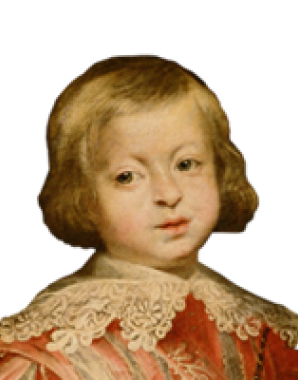Leopold I: ‘Türkenpoldl’
The long reign of Leopold I augmented and consolidated the rule of Absolutism. The period was marked by wars with the Ottoman Empire and with France.
Although Leopold I had in fact been intended for an ecclesiastical career, he unexpectedly came into line for the headship of the house of Habsburg through the premature death of his brother Ferdinand IV. He assumed rulership of the hereditary lands and in spite of a certain resistance was elected Holy Roman Emperor in 1658. Greatly influenced by his religious education, he was deeply pious and a promoter of the Counter-Reformation.
The period following the Thirty Years’ War saw the Habsburgs successfully consolidating Absolutist rule in the hereditary lands. The bureaucracy was expanded, while the creation of a standing army meant that 50,000 soldiers were constantly available for active service. Not, however, that there was any lack of resistance to Leopold’s rule: there were a number of uprisings and conflicts, most notably a ‘conspiracy’ of Hungarian noblemen, whose leaders were executed.
Habsburg rule was closely linked with the Catholic Church and the Counter-Reformation, which left their clear mark upon the art and life of the time. The populace were to have their minds formed by magnificent church services, processions, and pilgrimages, by imposing ecclesiastical architecture, and by propagandistic writings against the Protestants, the Turks, and the French: in short, Leopold’s subjects were to be pious and obey the Emperor. The Baroque architecture of this period has left an enduring mark upon the land, one notable example being the Plague Column that Leopold had erected on the Graben in Vienna after the end of the 1679 epidemic. The high Baroque lifestyle cultivated at the imperial court featured extravagant celebrations and was marked by Leopold’s personal interest in the arts, particularly music: he was a keen composer, writing over 200 works.
In the field of foreign politics, Leopold’s reign, which lasted more than half a century, was marked by conflicts with the Turks and the French. One war followed another. To the west, the ‘Sun King’ Louis XIV of France was striving for European supremacy. To the east a major invasion launched by the Ottoman Empire led to the second Turkish siege of Vienna in 1683, following which it was the Habsburgs’ turn to take the offensive. On account of the central role of the Turkish wars during his reign, Emperor Leopold was dubbed ‘Türkenpoldl’, even though he fled from Vienna during the siege, as he had done before during the plague. A few years before his death in 1705, the situation with respect to the Spanish succession became the most urgent problem – however, he did not live long enough to witness its resolution.
























